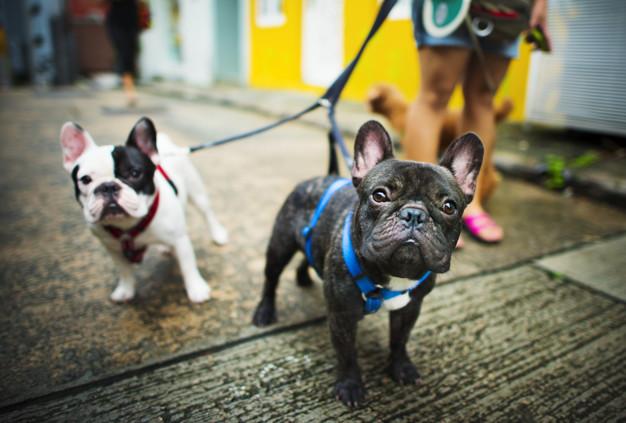
Just like any human, there will be times when your pup’s moods fluctuate. One moment, your bright-eyed, fluffy-tailed friend will be ready to cuddle up and serve up puppy kisses on a platter. The next moment, you may find your pup pacing the floor, restless and agitated. In these cases, your dog may have difficulties regulating its emotions and will act out by destroying shoes or turning your sofa into an oversized chew toy.
These mood swings may spark a line of questioning: What could be causing your dog’s bad moods? Is the breed type to blame for these bad behaviors? Are these household accidents and destructive episodes a phase, or should you prepare for this puppy angst to last a lifetime?
Multiple factors can impact your dog’s behavior, so learning what plays into their personality and actions is essential.
Breed
The type of breed you choose can determine your dog’s overall behavior. Some breeds are better behaved than others. For example, breeds like Beagles, Bernese Mountain dogs, Cavalier King Charles Spaniel, and English Cream Golden Retrievers tend to be the better-behaved breeds.
If you’re still picking out the right puppy for you and your family, consider looking for English Cream Golden Retrievers for sale.
Genetics
You may find that your dog’s behavior is based on its genetics. If you get to know the personality of your pup’s mom and dad, then you may see that their behaviors are similar to your dog’s conduct.
For example, if you breed two calm dogs, the puppy will likely be a more relaxed and peaceful canine. If you get a puppy from a breeder, make sure they are reputable and know how to test for temperament before breeding a litter of pups. Sometimes, it may be hard to change a dog’s behavior because it is often hardwired due to genetics.
For inexperienced dog owners, stick to generally well-behaved breeds as a rule of thumb. That way, you’ll be less likely to adopt a big troublemaker.
Their littermates
The litter a pup is born into could influence future behavior. If the mother dog gave birth to a large litter, she might not have had the time or energy to care for each puppy. Remember, a young pup learns plenty by playing with his littermates and watching his mother.
Because your dog’s time spent with its mom is invaluable, you should only adopt a puppy after eight weeks of socializing with the mother dog and littermates. As an additional precaution, make sure that the litter was relatively small and that your puppy was well taken care of during its early weeks of life.
The first four months of life
There is a specific socialization window all young dogs go through. This window starts around four weeks of age until four months into the dog’s life, which is when pups learn everything they can about their environment and the world around them. To ensure your dog gets along with other dogs, you’ll need to use this socialization window wisely.
As a pet owner, the best thing you can do is to expose your dog to lots of people, animals, noises, and locations during this socialization window. That way, your dog won’t respond negatively when its environment changes at the turn of a dime. Fair warning, if you don’t properly socialize your dog, they may become aggressive.
Their overall environment
The type of environment a dog is brought up in will change how it acts. If a puppy is surrounded by tons of children who pull its tail or push it around, the abuse could result in an unusually shy or even destructive adult dog when the pup grows older.
By contrast, if the environment is positive and your dog gets plenty of love and playtime, you’ll see the canine’s confidence grow. As such, your dog will be happier and more well-behaved. Make sure your dog’s environment is a positive one.
Their health
Your dog’s health can also be a factor. If your dog’s behavior changes suddenly, then you should take the pup to the veterinarian to check out how healthy your pet is. For example, if your dog has low thyroid levels, he may be more aggressive.
Dogs who are in pain will tend to be more angry and upset. Pain can produce behavioral changes in canines. Also, depending on the type of medication your dog takes, their behavior may differ.
Age
A dog’s age also impacts how a canine behaves. Essentially, puppies are more likely to need extra training and assistance to learn good behavior. The younger a dog is, the more time it takes to learn proper behavior and what is acceptable or not.
Puppies may have short attention spans and be more fearful than older dogs. Adolescent dogs can also be more sensitive at specific points in the development process, whereas an old dog experiencing chronic pain may err on the grumpy side.
Stress or anxiety
Both stress and anxiety can make it more difficult for your dog to learn appropriate behavior. As such, you’ll need to alleviate the stress your dog is experiencing if you want your pup’s behavior to improve. Remember, it’s difficult for a dog to learn and master new commands when experiencing stress in excess.
To reduce your dog’s anxiety, change the environment and take a break from training. Try playing catch with your dog, giving lots of cuddles, and feeding your pet some dog treats.
Your own behavior
Furthermore, your body language and behavior related to stress or anxiety can make your puppy more anxious and upset. Dogs are intuitive creatures that feed off their pet owners’ body language and overall mood.
They respond to their owners’ behaviors in similar ways. If you’re stressed out, it may impact your dog and make him anxious. Take a moment to think about how your body language and tone could affect your pet. You may want to try changing your conduct, communication style, and mood to alter your dog’s behavior.
A happy pet owner will produce a happy dog, which is a win for everyone.
Wrap up
After reading this guide, you should have a solid understanding of nine different factors that impact dogs’ behaviors.
Now, you can change up a dog’s environment, pick the right breed, make sure your pup is healthy, and even alter your own body language to improve your puppy’s behavior. Before you know it, your pup will be a happier and sweeter companion that you can take on a walk in the local dog park.








